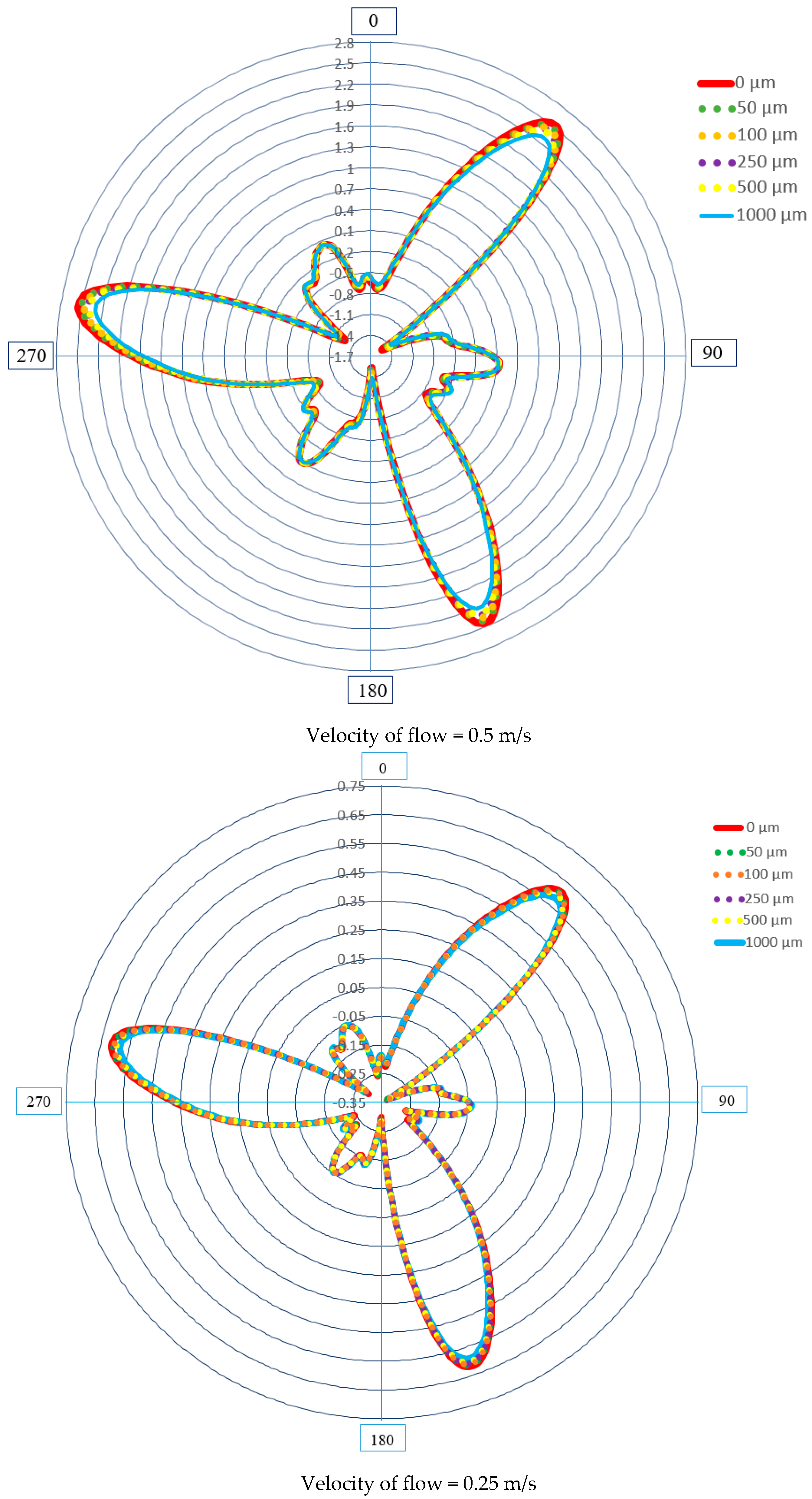

And the surface roughness also reduces the range of fluctuations of the density near the walls in the nanochannel, which is because fewer fluid particles reside near the rough nanochannel walls compared to the ideal nanochannel. In addition, the surface roughness increases the velocity and temperature in the nanochannel by shrinking the cross-section with constant roughness height. From the above simulation results, we find that increasing the roughness height increases the temperature and velocity of nanofluid. In order to investigate the effect of surface roughness including rectangular, triangular, and hemispherical roughness on the flow properties of nanofluid, parameters such as temperature, total potential energy, velocity, and density profiles of H 2O/Cu nanofluid were calculated. In our simulations, water molecules were employed as the base fluid, and copper atoms were adopted to model the nanochannel walls and nanoparticles. Probes are copied to projects together with plots that define the probes.In this paper, the influence of surface roughness inside the nanochannel on nanofluid flowing properties was studied by using molecular dynamics simulation (MDS). You can display a Flux Plot in the Transient Explorer.Ĭrop region is accounted for when evaluating surface parameters. You can show equation goals based on defined goals after calculation. You can create solid and fluid bodies for Improve Geometry Handling mode. You can automatically remove reference geometry (faces, edges, and points) of missing or suppressed bodies from the selection. This lets you model complex behavior of the transient system, for example, power derating based on a temperature sensor. The RANGE function gets goal values at any time during calculation. The specific power (W/m3) can be dependent on local (calculated in the cell) temperature in formula or table dependency. With the Compare tool, you can create a plot image displaying the difference of one particular case to a reference case. With the Compare tool, you can merge plots from different projects to see critical results in one image. The Compare and Parametric Studies include a Results Summary. Switching between scenes displays the plots saved in the scene and retains the corresponding model display, zoom, and orientation. Scene plot stores all displayed plots, model orientation, zoom, and part visibility.


 0 kommentar(er)
0 kommentar(er)
